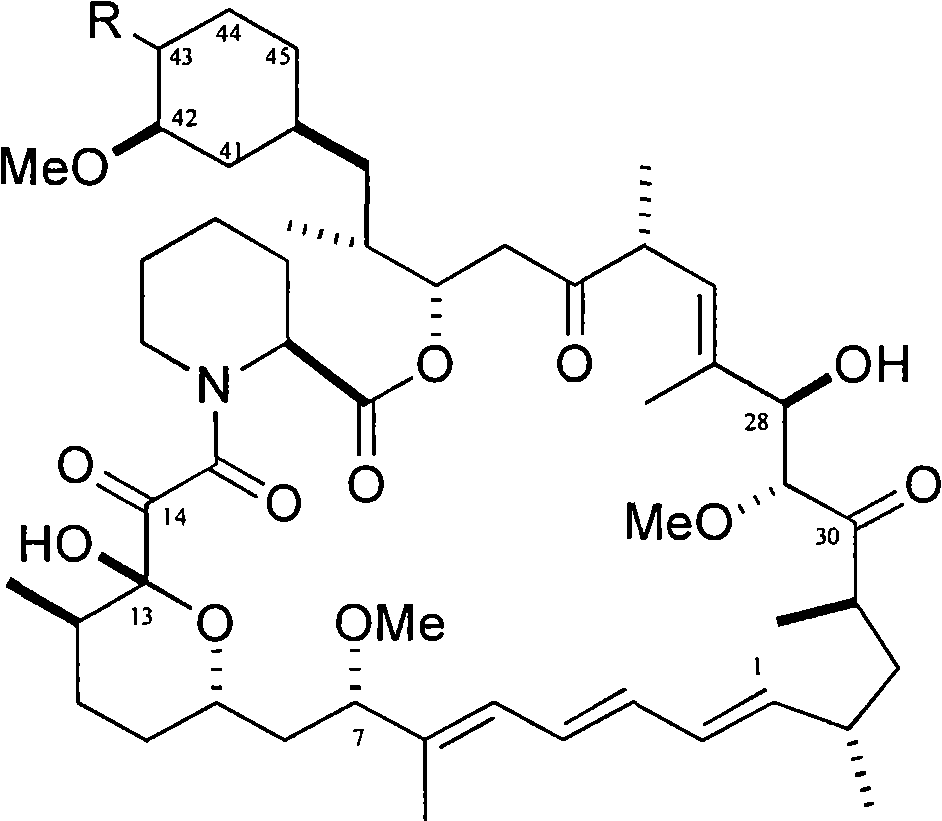Administration of mntor inhibitor to treat patients with cancer
An inhibitor and drug delivery technology, applied in pharmaceutical formulations, anti-tumor drugs, drug combinations, etc., can solve the problems of oral ulcer toxicity and affecting the therapeutic effect of mTOR inhibitors, etc.
- Summary
- Abstract
- Description
- Claims
- Application Information
AI Technical Summary
Problems solved by technology
Method used
Image
Examples
Embodiment 1
[0066] Example 1: Oral formulation AP23573
[0067] The following procedure was used to prepare tablets each containing 10 mg of AP23573 and the ingredients listed below. The tablets are coated with two different coatings - a film-coated tablet for immediate release and an enteric-coated tablet for delayed release. The composition of the tablet cores is shown in the table below. The tablet cores are film-coated and can be used as such, or they can also be enteric-coated.
[0068] components
weight percentage
AP23573
8.00%
BHT
0.08%
Hydroxypropyl Cellulose
8%
lactose monohydrate
50.57%
microcrystalline cellulose
30.85%
Croscarmellose Sodium
2.00%
Magnesium stearate
0.50%
Absolute Ethanol (Ethanol) *
-
[0069] * Used in the process but not present in the final product
[0070] Hydroxypropyl cellulose, lactose monohydrate, microcrystalline cellulose...
Embodiment 2
[0080] Example 2: Phase I dose-escalation trial of oral AP23573 in patients with unresponsive or progressive malignancies
[0081] Background: In a phase I clinical trial of an intravenous (IV) formulation of the mTOR inhibitor AP23573, the drug was well tolerated and active against a wide range of cancers. This trial is a safety, tolerability and maximum tolerated dose (MTD) test for oral dosage form of AP23573. Its secondary purpose is to study the antitumor activity, pharmacokinetics (PK) and pharmacodynamics (PD) of AP23573.
[0082] Methods: The selected patients were initially randomly grouped (at least 3 patients in each group), and the fixed initial dose of 20mg / day was one of the three 28-day dosing regimens, that is, once a day for 4 consecutive days a week (QDx4), 21 consecutive days in 28 days (QDx21), or 28 consecutive days (QDx28). Subsequent dose levels were determined based on the safety and tolerability of the first cycle of medication, and were recorded i...
Embodiment 3
[0086] Example 3: Other Studies
[0087] Additional clinical studies of AP23573 were conducted using 30, 40 or 50 mg of AP23573 / day according to the QDx5 dosing regimen. Patients receiving doses of 30 and 50 mg were given a loading dose on the first day of each week so that the dose on that day was doubled to 60 and 100 mg, respectively.
[0088] Methods: In a phase 1 / 2a trial of single-drug oral AP23573, 17 patients, 9 of whom were sarcoma patients, were studied with selected doses and dosing regimens (40mg QDx5). In addition, of the 7 patients who were initially given 50 mg QDx5, 4 patients (2 of whom were sarcoma patients) had their dose reduced to 40 mg. Therefore, 21 patients received the 40mg QDx5 regimen, 11 of whom were sarcoma patients.
[0089] In another study of QDx5, the dose was doubled on the first day of the week (to include the loading dose), and 7 patients (6 with sarcoma) received weekly doses of 60, 30, 30, 30 and 30 mg ( That is, a regimen of 30mg QDx5,...
PUM
 Login to View More
Login to View More Abstract
Description
Claims
Application Information
 Login to View More
Login to View More - R&D
- Intellectual Property
- Life Sciences
- Materials
- Tech Scout
- Unparalleled Data Quality
- Higher Quality Content
- 60% Fewer Hallucinations
Browse by: Latest US Patents, China's latest patents, Technical Efficacy Thesaurus, Application Domain, Technology Topic, Popular Technical Reports.
© 2025 PatSnap. All rights reserved.Legal|Privacy policy|Modern Slavery Act Transparency Statement|Sitemap|About US| Contact US: help@patsnap.com

